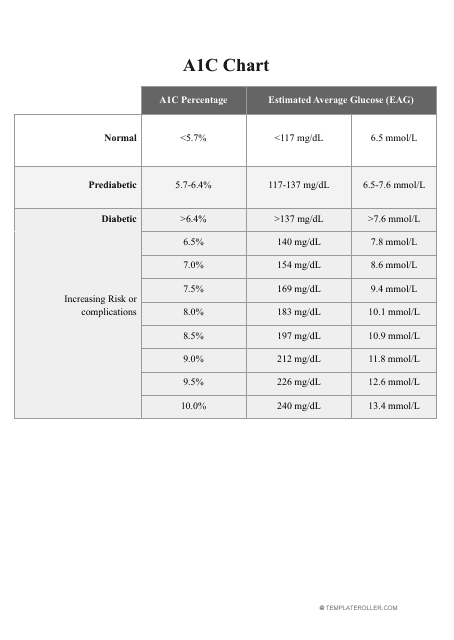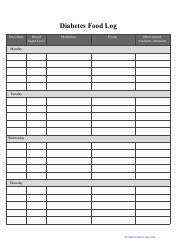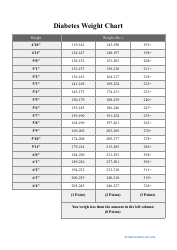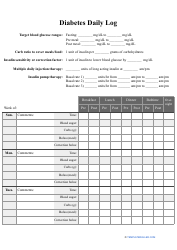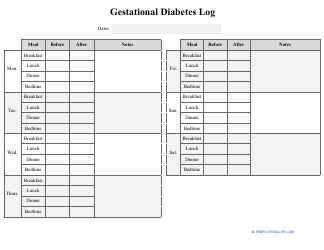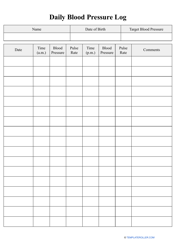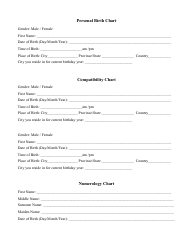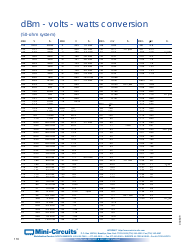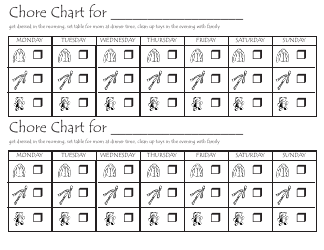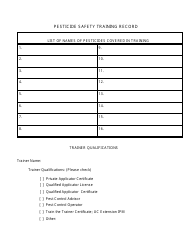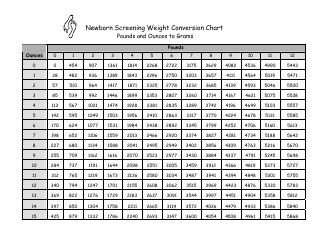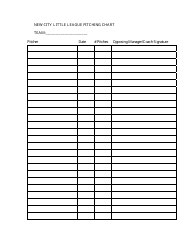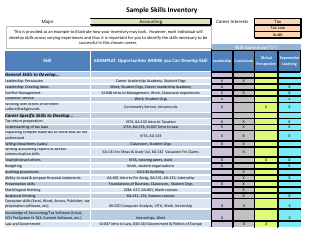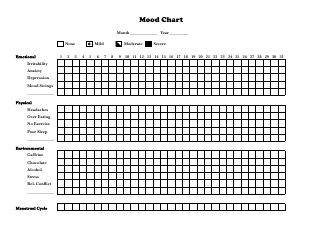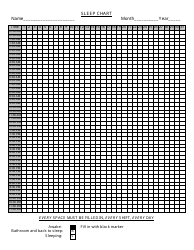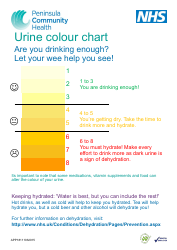A1c Chart
What Is the A1C Chart?
An A1C Chart is a visual instrument that refers to a reliable estimate of A1C levels - the percentage that verifies the average amount of glucose in your blood over 8 to 12 weeks.
Alternate Name:
- A1C Level Chart.
Whether you are concerned about your health due to factors associated with potential diabetes diagnosis or you were already examined by a doctor who confirmed you are diabetic, this tool is necessary to get an insight into your diagnosis and select the best treatment since diabetes is a tricky disease that comes with complications and often unpredictable consequences.
You may download an A1C Chart template via the link below.
How to Calculate A1C?
In order to compute your A1C levels, you have to schedule a doctor's appointment and ask them for an A1C test. You will discover the concentration of glucose in your blood and then you can use the formula to learn the percentage of average glucose in your body - add 46.7 to the number from your test results and divide by 28.7. For instance, if your average blood sugar is 100 mg/dL, your A1C value will be 5.11%.
A1C Conversion Chart will be useful when you are analyzing the results of the test:
- Percentage lower than 5.7% - no need to worry at the moment . As long as you continue to live a healthy life and avoid harmful habits that cause diabetes and related diseases, you will encounter no troubles. You can undergo this test again in six months or a year for your peace of mind.
- Percentage between 5.7 and 6.4% - you cannot ignore these readings even if the doctor ensures you there is no diabetes right now . The numbers show you have high blood sugar, and that may cause numerous issues that affect your body, from kidney failure or skin diseases.
- Percentage higher than 6.5% - you have type 1 or type 2 diabetes . Book an appointment with a doctor to discuss suitable treatment or make adjustments to the existing one if you believe your condition has deteriorated - quite often, patients manage to take control of their diabetes yet due to circumstances beyond their control the readings get worse.
When to Chart A1C Levels?
There are two reasons you should see whether your blood sugar has been within the A1C normal range over the last two or three months:
- If you or your doctor suspect you might be diabetic and there are factors that put you at risk - for instance, older age, excess weight, lack of physical activity, or close relatives that have been diagnosed with diabetes - the test should be carried out regularly to make sure you are still healthy - or find out you are not and start the treatment as soon as possible.
- If you already have diabetes, it is recommended to get this test two or three times every twelve months . The doctor may encourage you to check A1C levels more frequently in case your treatment has not been successful or you started taking new medication. Note that you can reach the A1C target you want yet still have worrying symptoms - keep an eye on any unusual sensations and inform your doctor about them.
There are no specific rules to follow before you undergo a test and the doctor utilizes a Chart for A1C to decipher your results - yet consult with your physician about restrictions in case you plan to have more tests at the same time.
How to Lower My A1C?
If you and your doctor learned your A1C Chart levels are high, do not get discouraged - there are measures you may implement to take them under control. Here is what you can do for your health and better management of your diabetes:
- Modify your nutrition . You must make better dietary choices in general when it comes to diabetes, and experts agree that vitamin deficiency leads to higher hemoglobin in patients. Eat plenty of vegetables, fruits, nuts, grains, and legumes and avoid fried meat, baked goods, and full-fat dairy. It is also possible to consider supplements with high levels of vitamins B12 and D.
- Adopt a wellness routine that works for you and becomes an essential element of your lifestyle . Lack of movement leads to further health complications for diabetics which is why healthcare professionals insist a training program a patient actually enjoys is key to better health and lower blood sugar.
- Choose a more effective treatment - new medication can be beneficial for you if you are still figuring out the best course of action for a long-term period. Note that this step must be done only if your physician allows it - tell them about your issue and discuss what medicine can be selected in your particular case.
Still looking for a particular template? Take a look at the related templates below:
